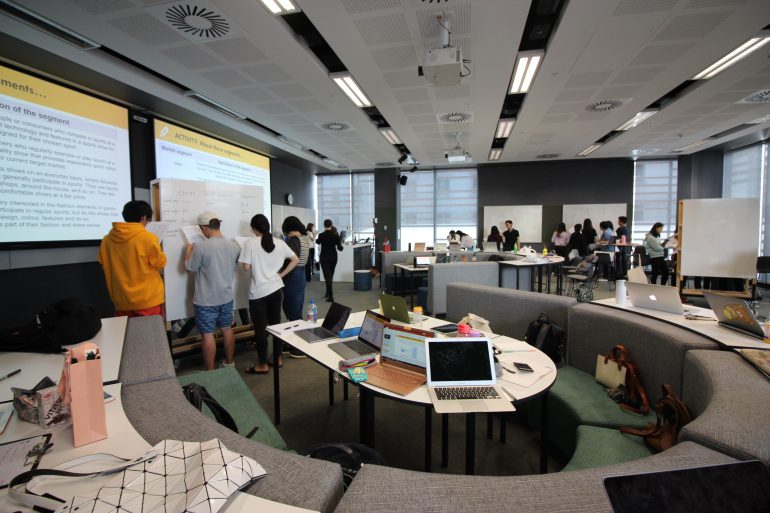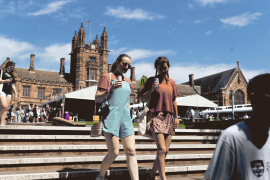Over the past ten years we have defined and committed to the enactment of a bold new vision at the University of Sydney. This has involved reimagining our organisational structure, curricula, and digital and physical infrastructure for learning.
At the heart of all this change is an unwavering commitment to our students. Our goal is for each and every one of them to experience their time with us as period of growth—completing programs of study that foster deep engagement, broad participation and the authentic assessment of learning.
As significant pieces of this puzzle fall into place we are moving into a phase of being able to implement many of our most ambitious plans, and part of doing this well will involve understanding the spatial implications of these changes. In an effort to broaden participation in the development of a distinctive suite of learning spaces—capable of accommodating the evidence-based practices we value—the DVC(E)’s Educational Innovation team is looking to partner with interested educators who have:
- developed a new unit of study that promotes collaborative learning and would like to teach it in a space well suited to this type of learning activity, or
- are reworking the delivery of a unit of study that is well suited to a space designed to support learning through alternating patterns of reflection, shared dialogue, and sketching.
Our contribution to these partnerships could include pedagogical support (design and enactment) or assistance in framing practitioner-led research. Your contribution will involve a willingness to be interviewed at least twice and accommodate intermittent observation of learning activity and limited in-class surveys of students.
Through this work we aim to understand how changes to learning space design is influencing learning activity, explore how our most innovative educators are using these spaces, and identify reusable elements of design for inclusion in future (re)developments.
New learning spaces
In 2020 we are focusing on seminar rooms and learning studios. Some of the listed learning learning spaces offer minor variations on current university standards, whilst others provide significantly different arrangements.
In the Abercrombie Building
- Seminar Room 2280 seats 30 using a range of mixed movable furniture. (Fig. 1) and provides a single digital projector and screen, a document camera, and eight fixed whiteboards.
- Seminar Room 2290 seats 60 using a range of mixed movable furniture (Fig. 2) and provides two digital projectors and screens, a document camera, and ten fixed and three movable whiteboards.
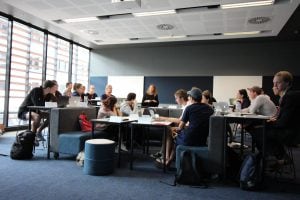
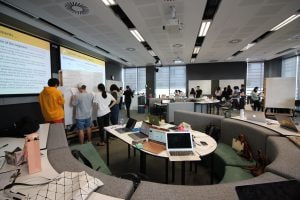
In the Merewether Building
- Learning Studio Rm158 seats 60 using mixed movable furniture (Fig. 3) and provides student computing at a ratio of 1 to 8.5, two digital projectors and screens, a document camera, and seven fixed and three moveable whiteboards.
- Learning Studio Rm154 and Rm156 each seat 36 using uniform movable furniture (Fig. 4) and provide student computing at a ratio of 1 to 6, a single digital projector and screen, a document camera, and six fixed whiteboards.
- Seminar Rm273 and Rm275 each seat 36 using uniform movable furniture (as in Fig. 4) and provide a single digital projector and screen, a document camera, and seven fixed whiteboards.
- Seminar Rm277 seats 60 using mixed movable furniture (as in Fig. 3) and provides two digital projectors, a document camera, whiteboard screen capture on seven fixed whiteboards, and three moveable whiteboards.
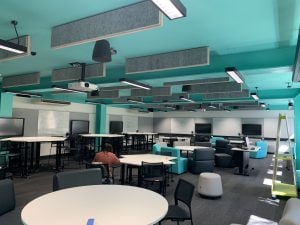
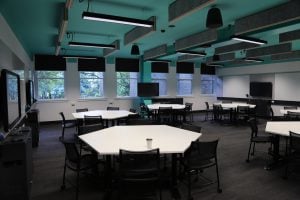
In the PNR Building
- Learning Studio Rm315 and Rm316 each seat 30 using fixed uniform seating (Fig. 5 ) and provide student computing at a ratio of 1 to 2, a single digital projector and screen, a document camera, and fixed whiteboards on three walls.
- Learning Studio Rm310 and Rm 311 seat 92 and 76 respectively using uniform movable furniture (Fig. 6) and provide student computing at a ratio of 1 to 4, three digital projectors and screens, a document camera, and video monitor.
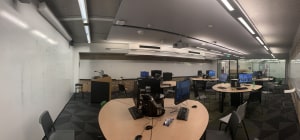
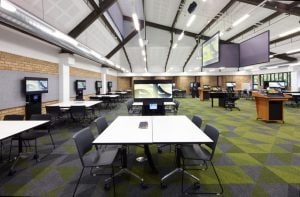
In the Physics Road Learning Hub
- Seminar RmG19 seats 76 using mixed movable furniture and provides two digital projectors and screens, a document camera, four fixed whiteboards, and video conference facilities.
Expression of interest
To register your interest in teaching in one of these spaces, in Semester 1, 2020, please complete this short survey by the 11th December 2019.
Expressions of interest for Semester 1, 2020 have now closed. If you would like to be notified in advance of future expressions of interest please email [email protected]
Preference will be given to those addressing current strategic priorities including support for students in transition, and the development of pedagogical practices that promote collaborative, interdisciplinary learning activity and team-based assessment.

